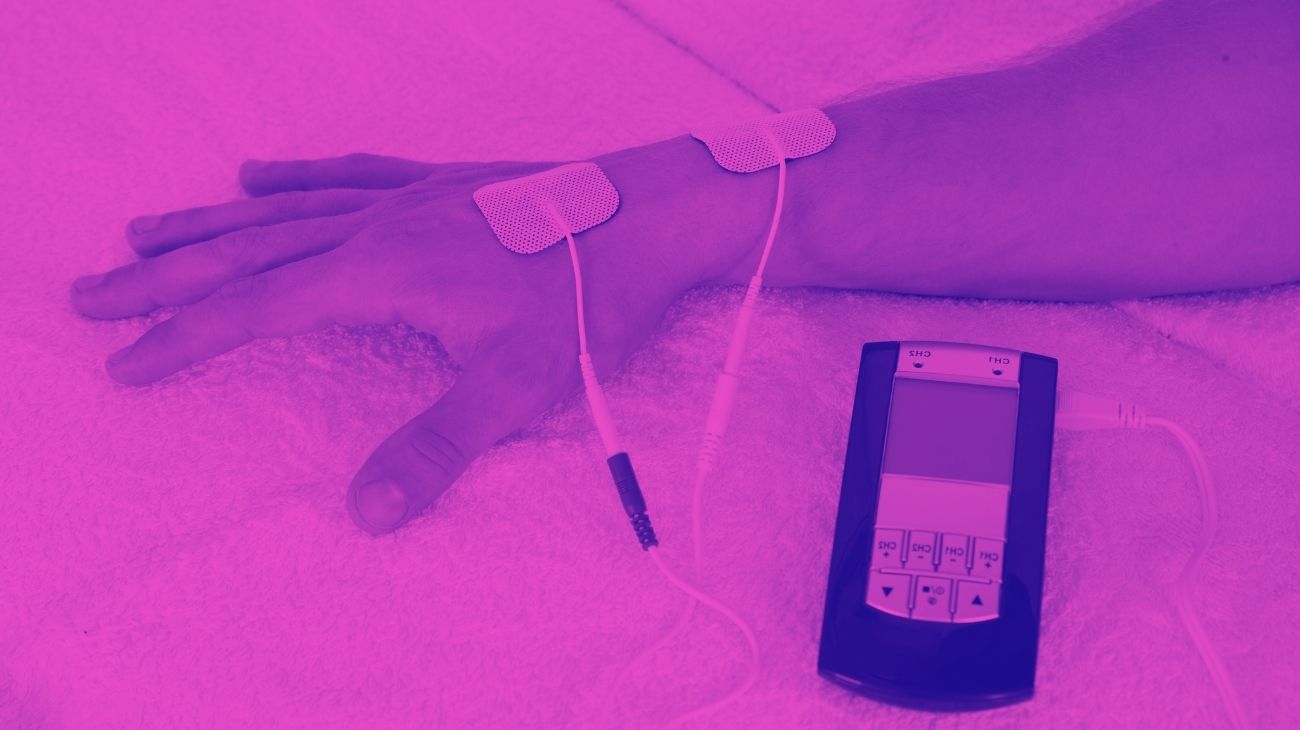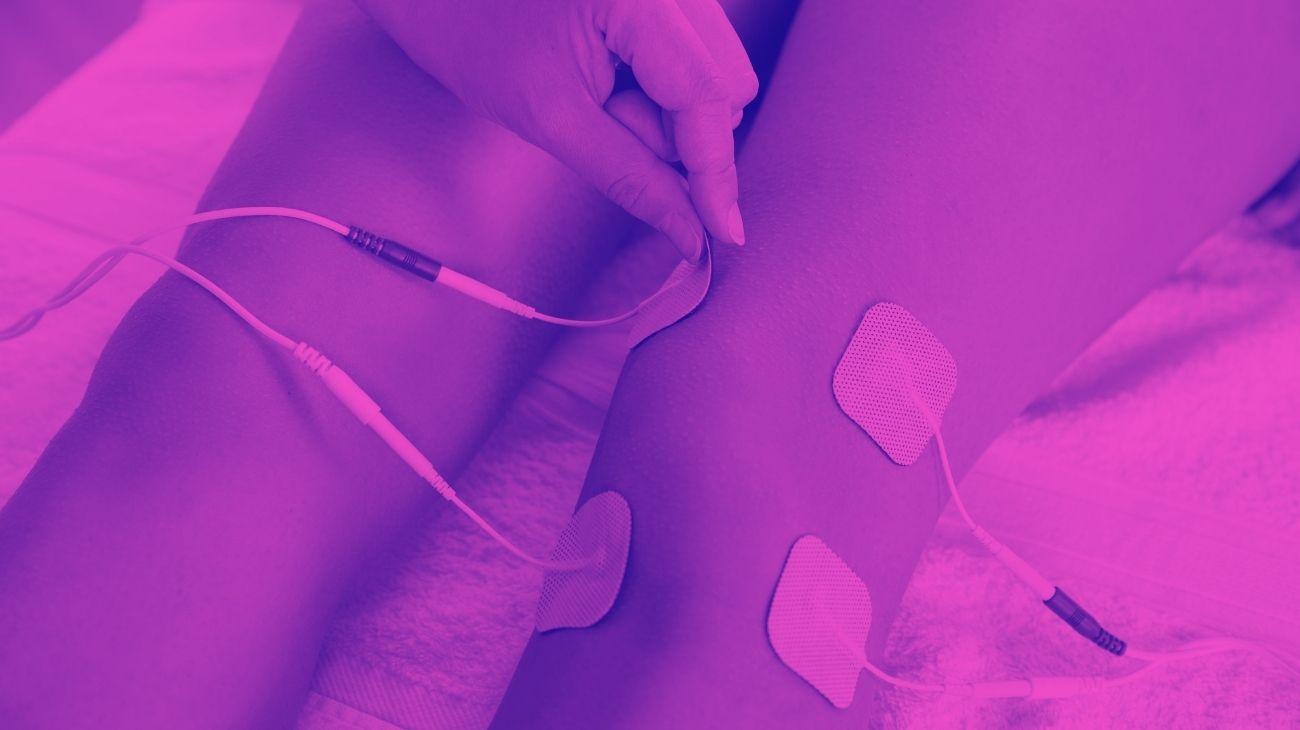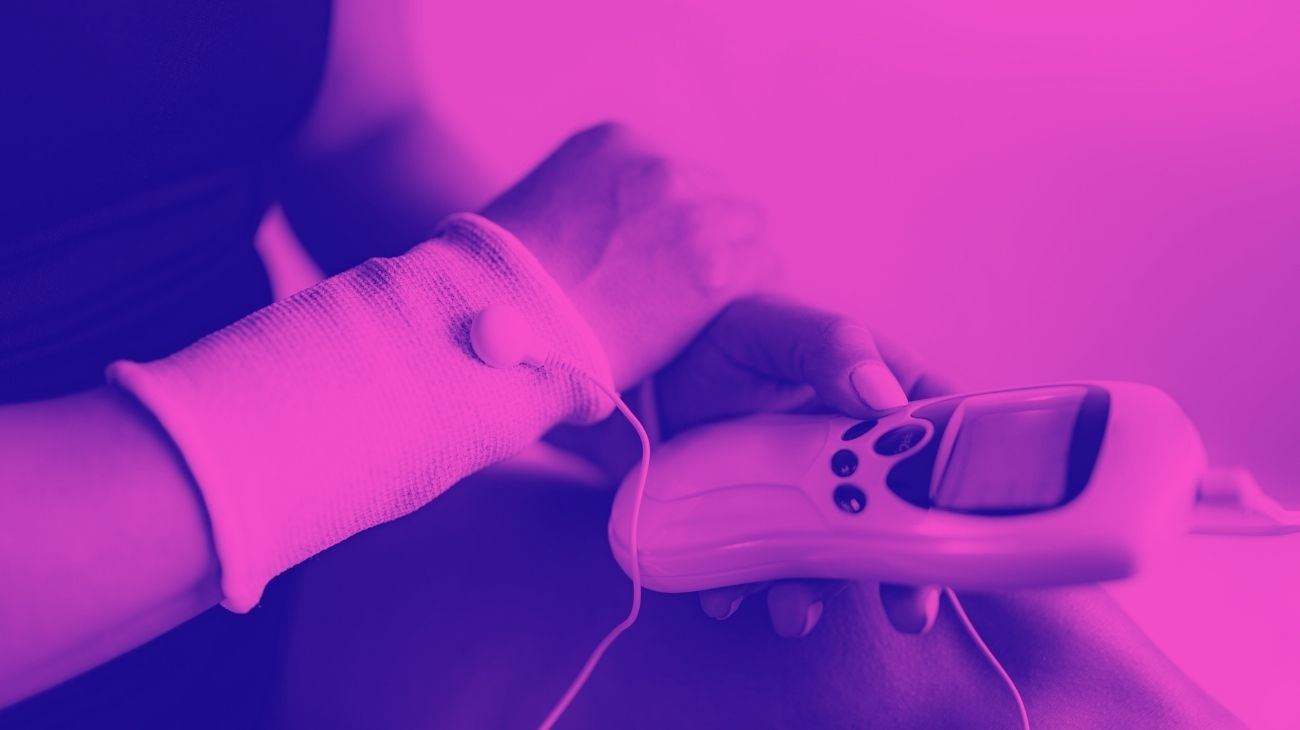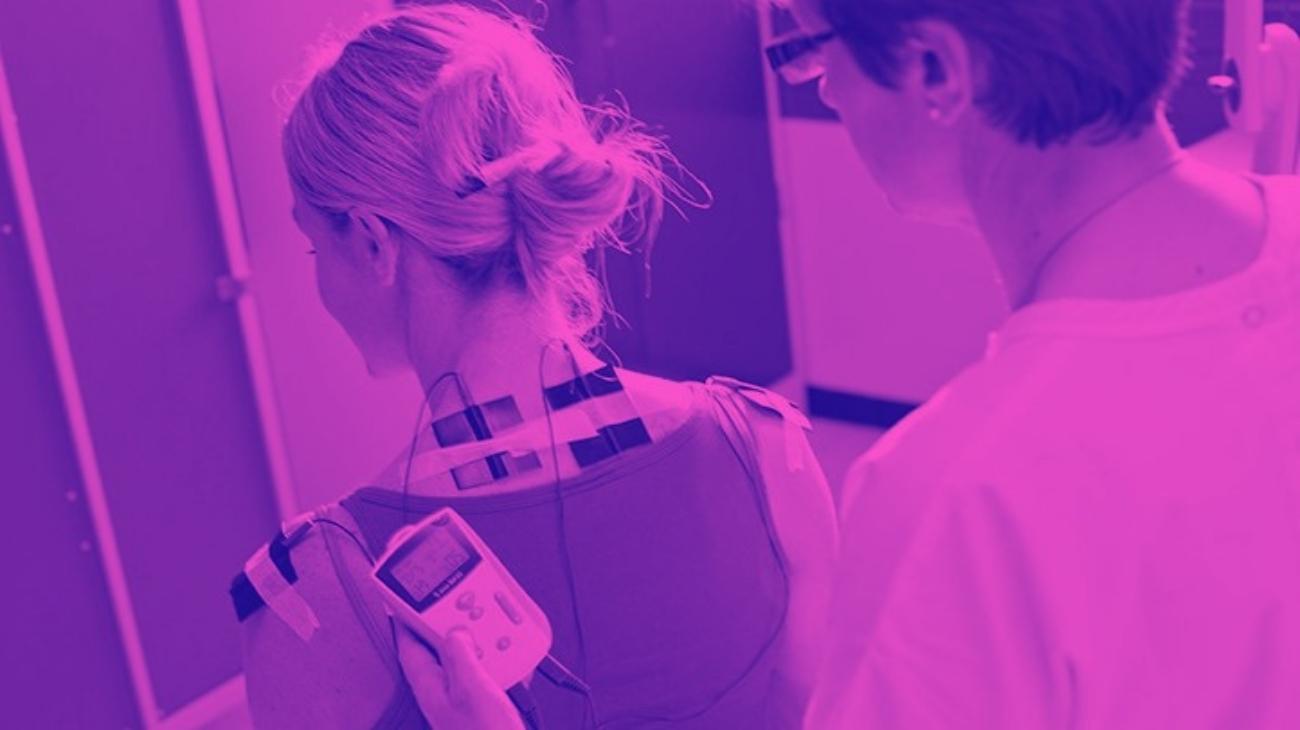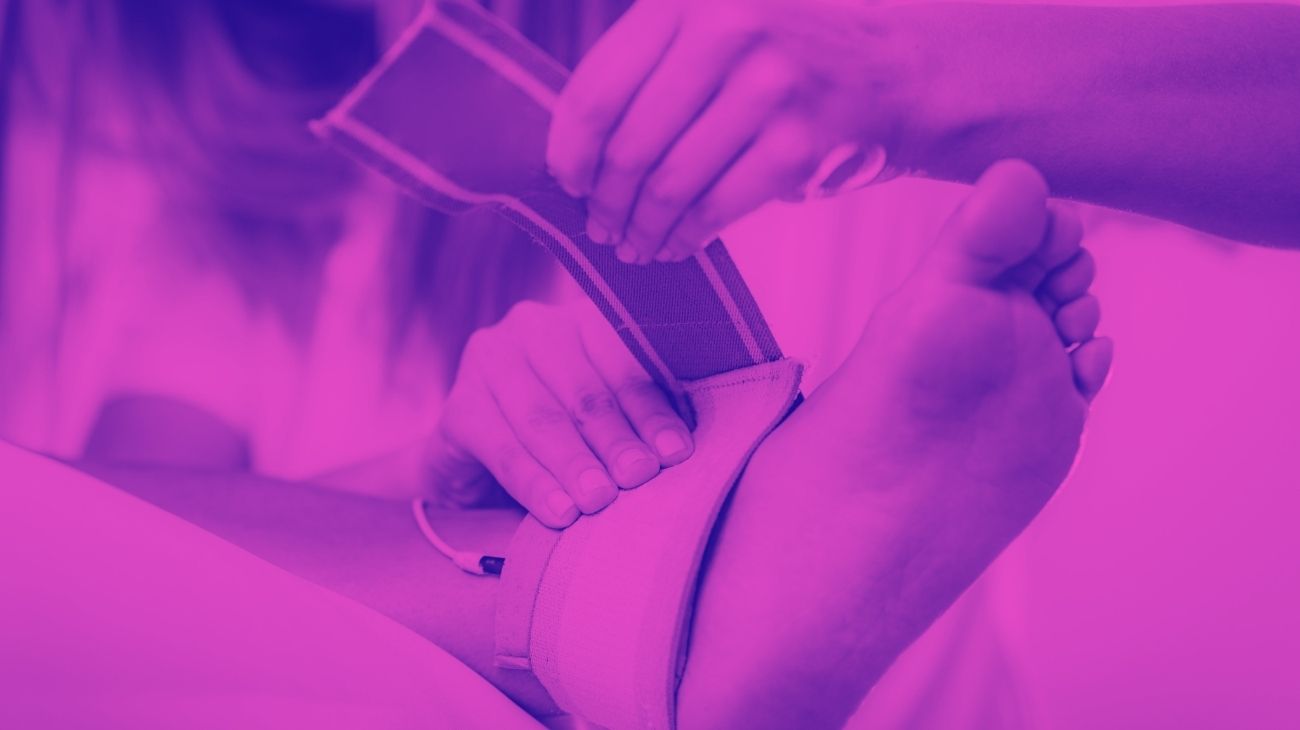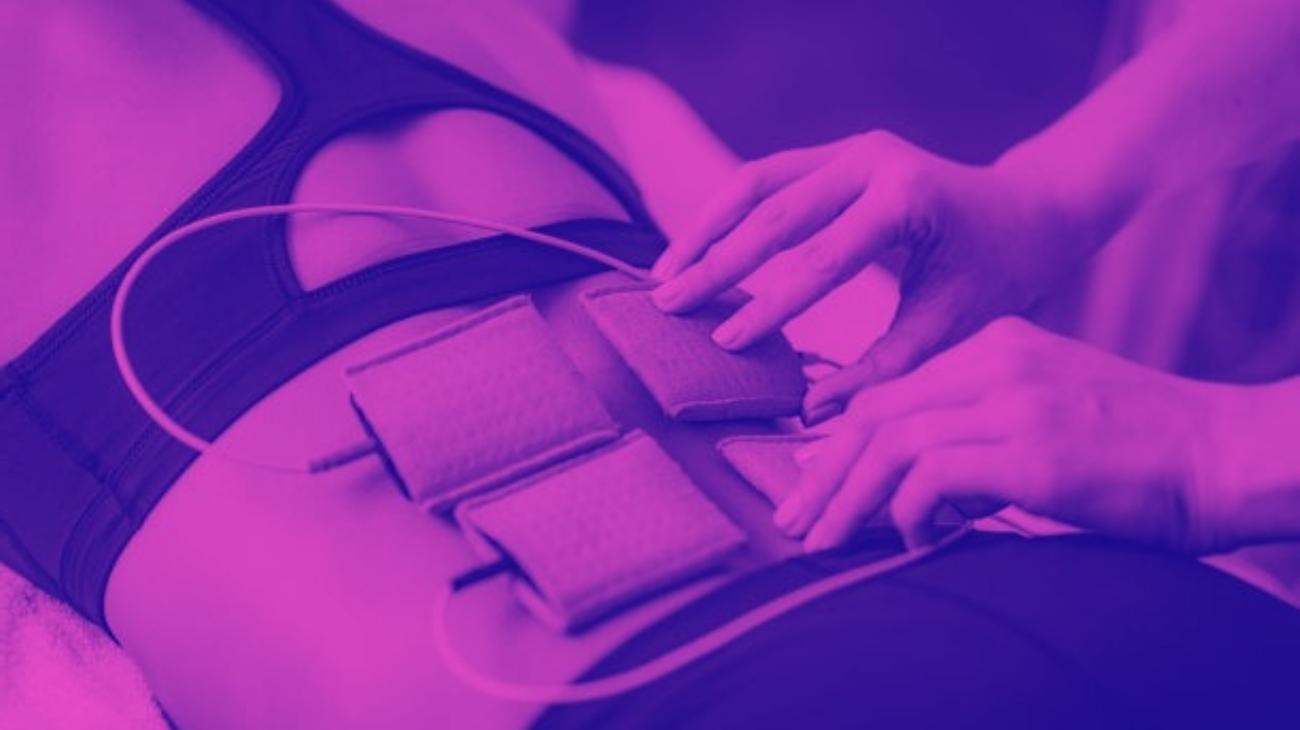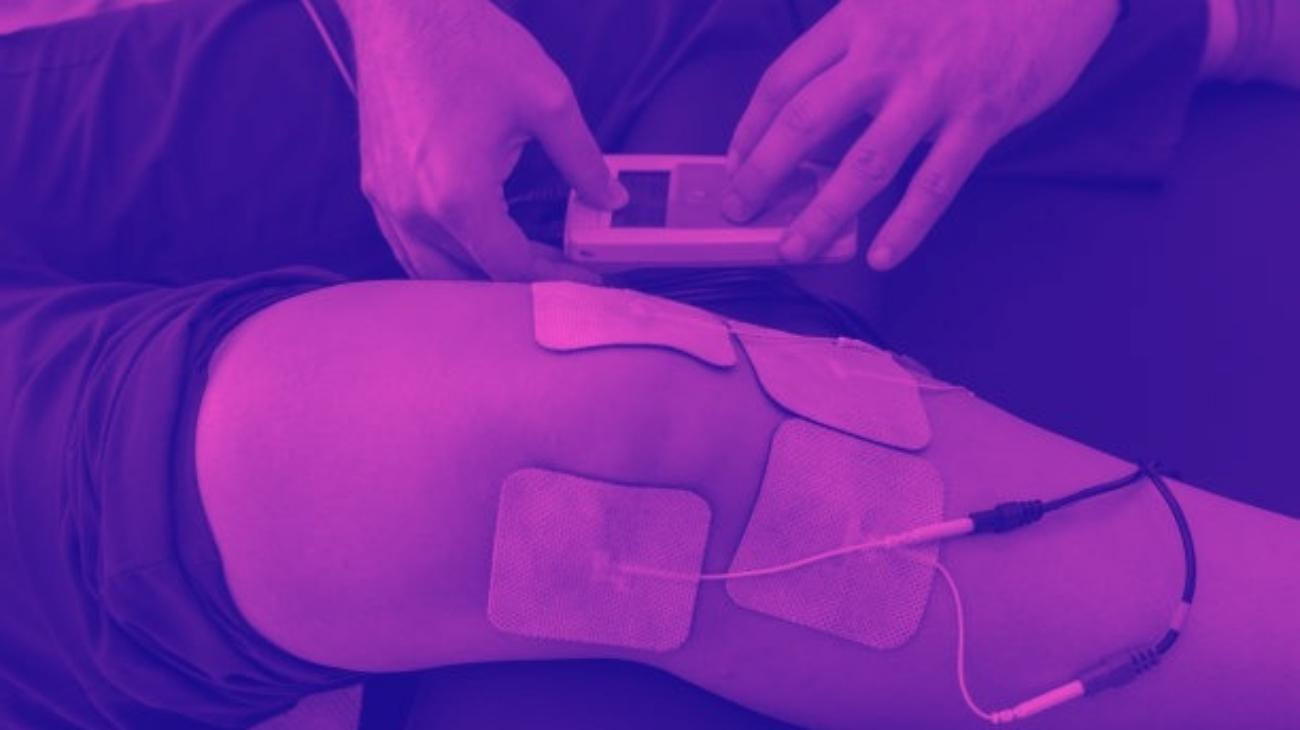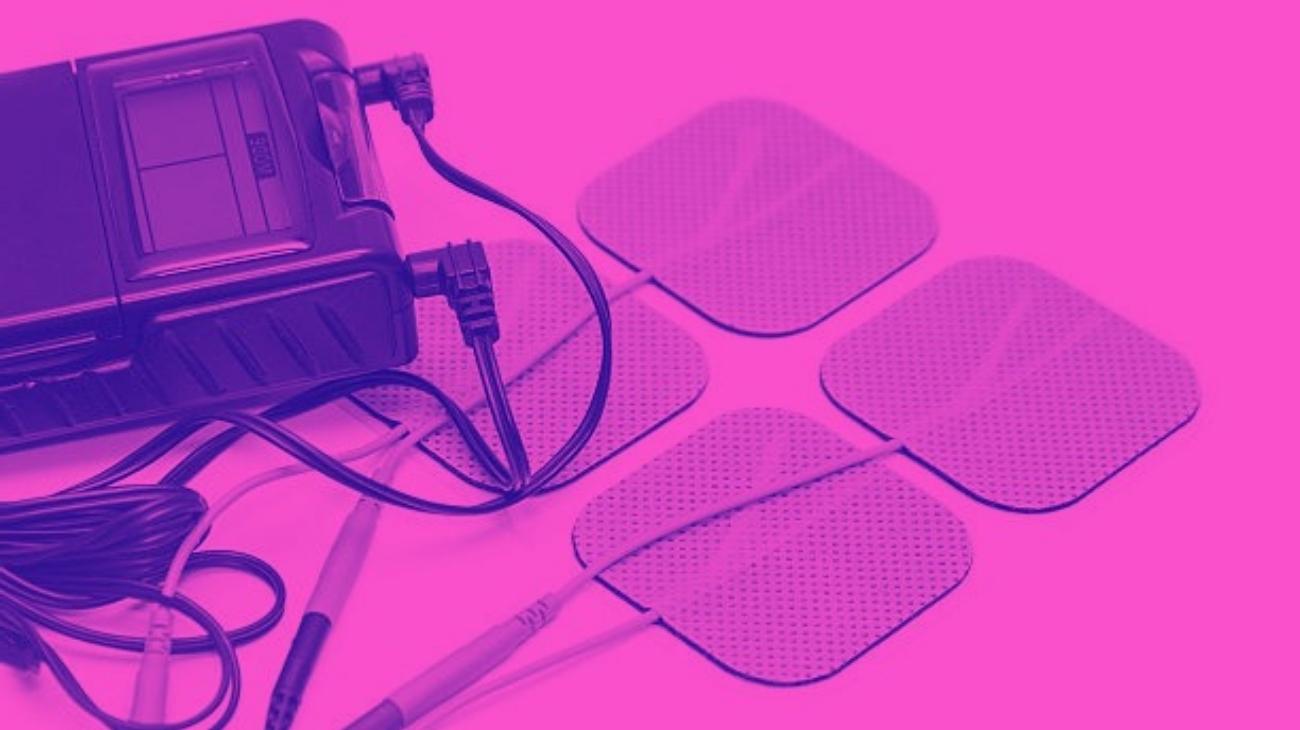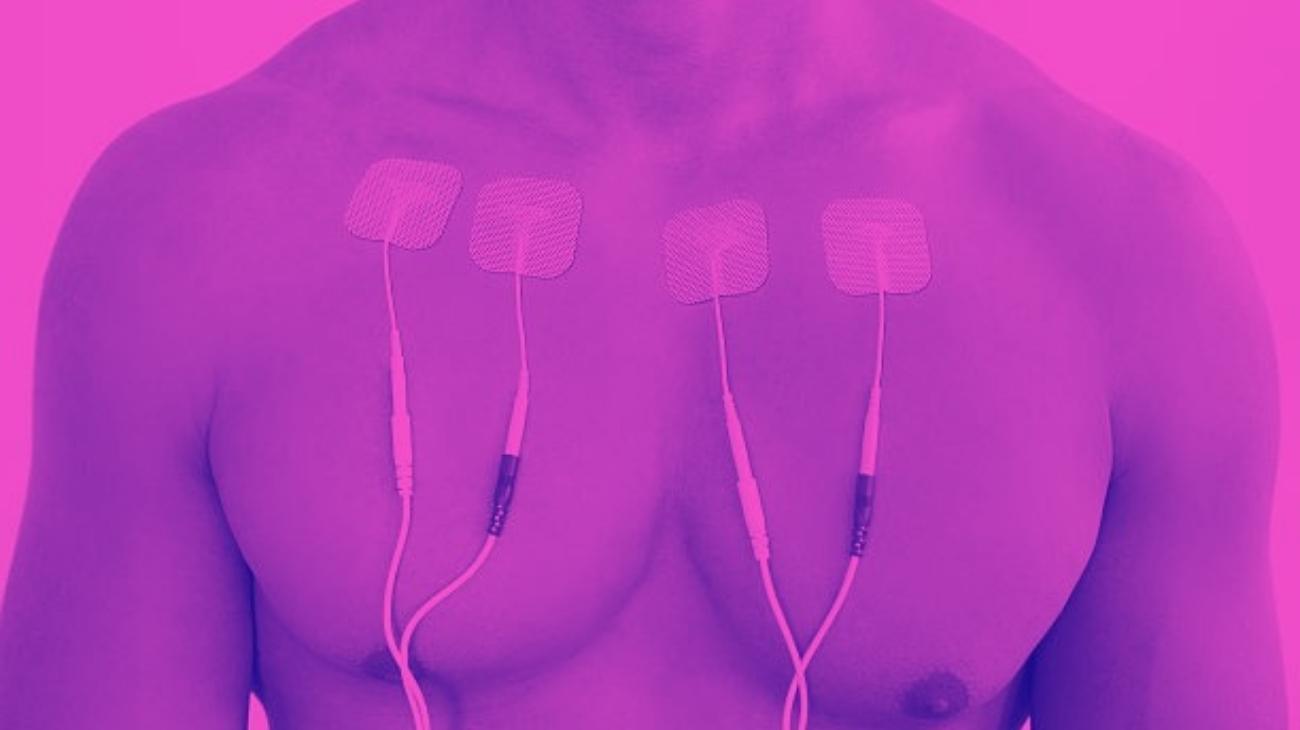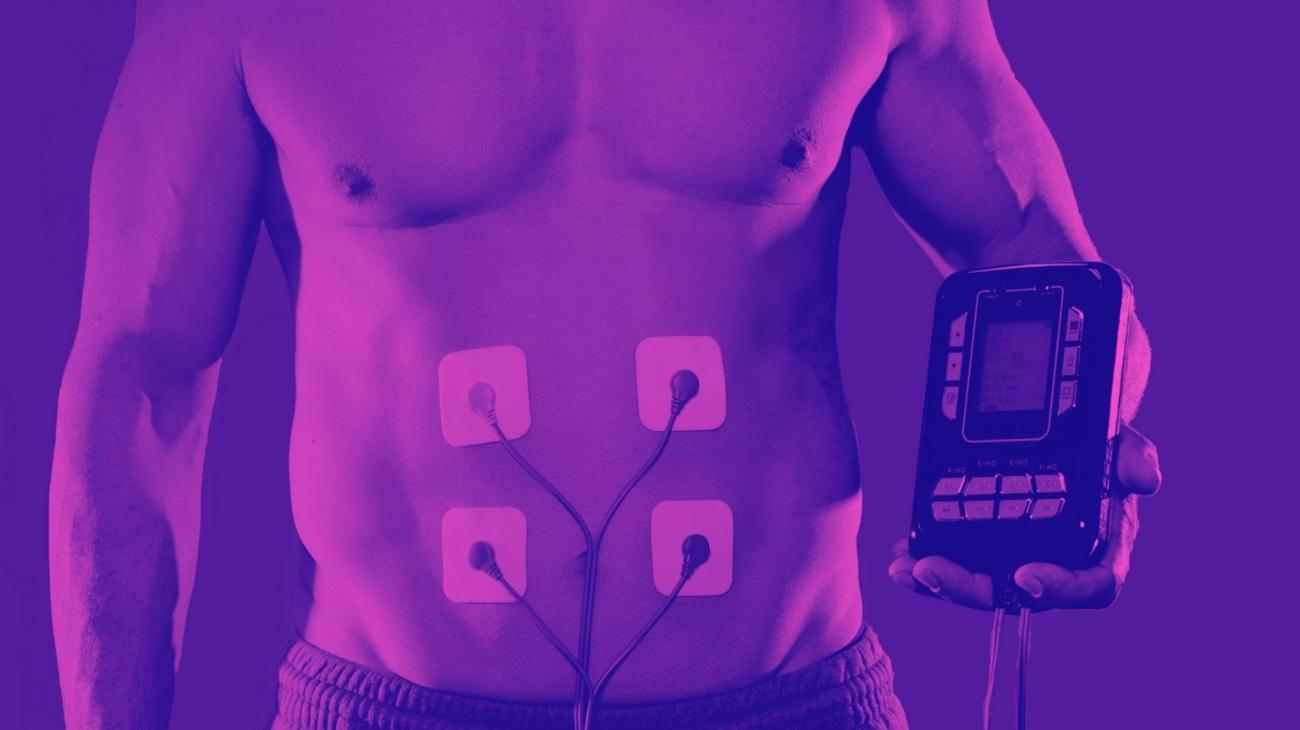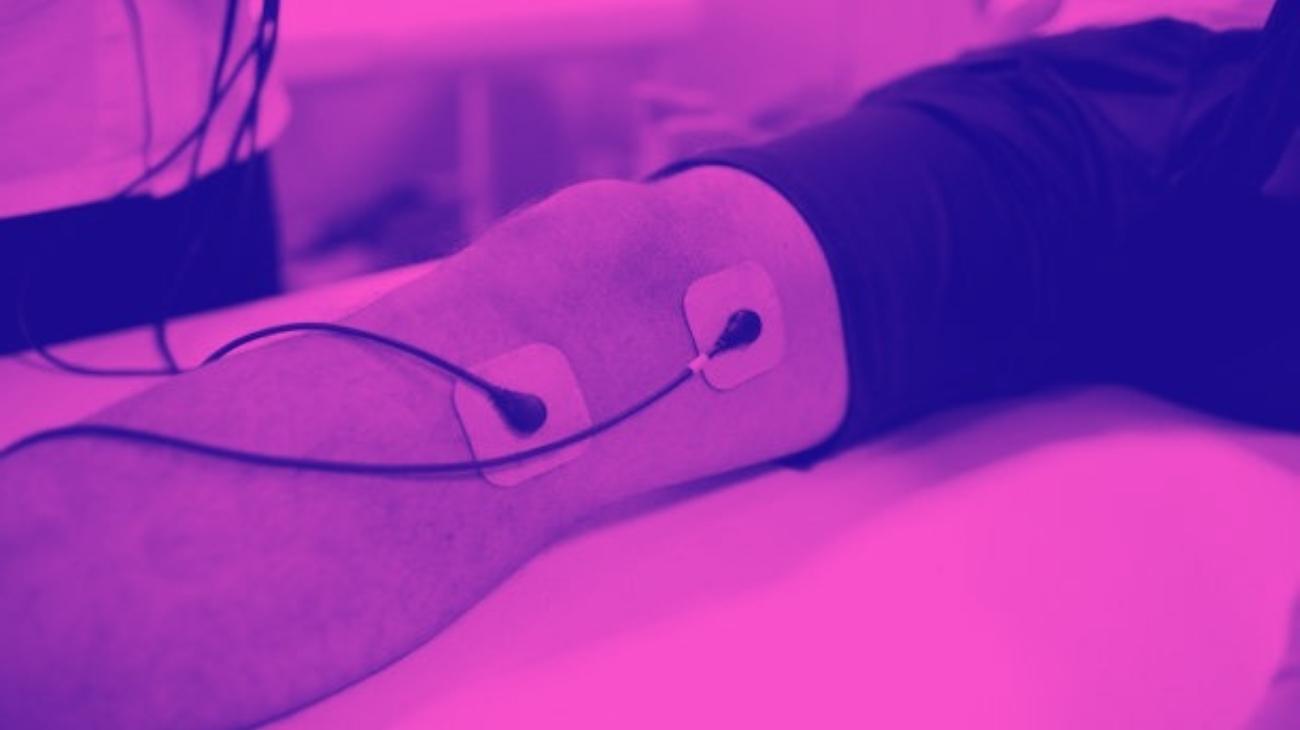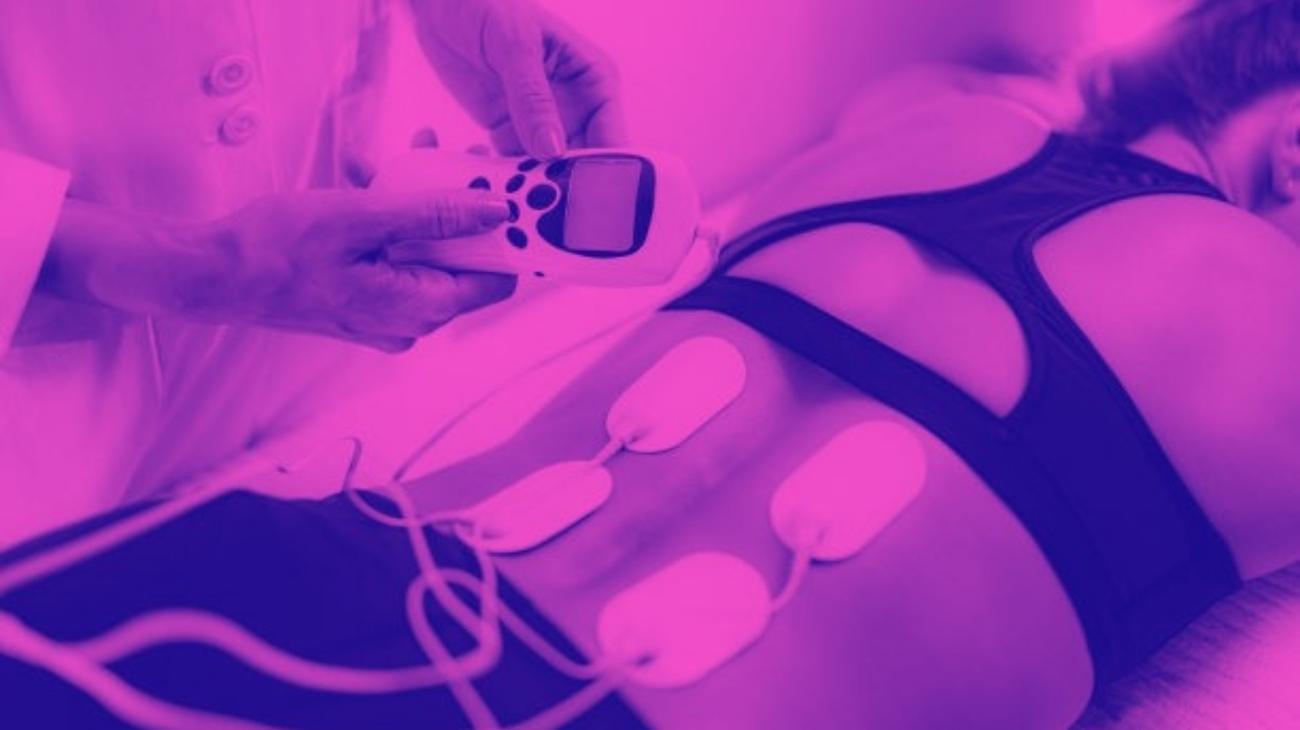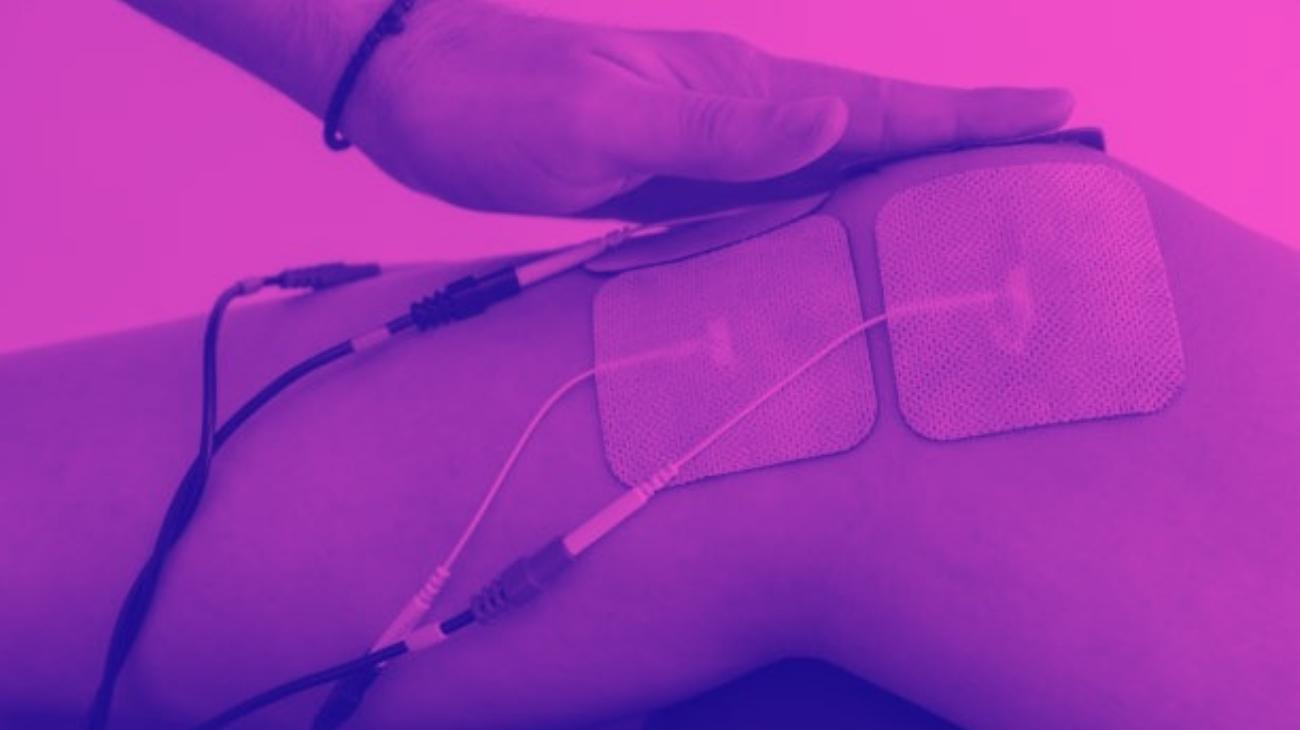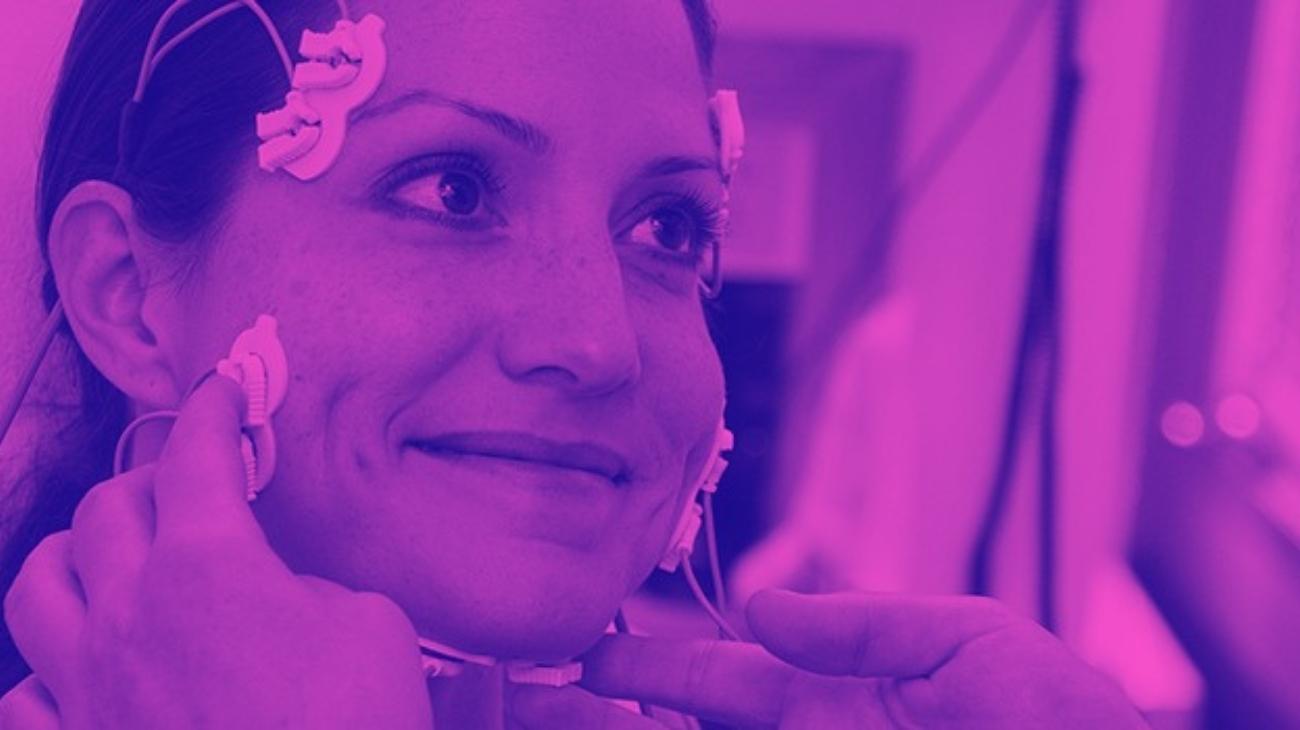- How to use TENS machines to relieve meniscus tear pain?
- Best TENS units to treat meniscus tears
- How to use EMS to strengthen muscles and prevent torn meniscus?
- Best EMS machines to avoid meniscus injuries
- Video: How to place electrodes pads on the knee?
- More types of EMS stimulators and TENS machines you should know about
- What is a meniscus tear and what are the causes?
- What are the most common types of meniscus injury?
- Differences between TENS and EMS: Which is better for treating meniscus injury?
- Contraindications in the use of electrodes and electrotherapy
The knees play a vital role in the motor processes of the human body, since the legs have a wide range of motion and a cushioning system when performing more demanding activities such as walking and running. This cushioning is originated by a system of cartilages located in the knees, which are called menisci.
Due to the constant stress to which they are exposed, the menisci have the possibility of suffering tears that can generate considerable ailments. In these cases, it is necessary to use electrotherapy methods to treat the symptoms of this injury. Below, we will teach you everything you need to know about the consequences of meniscus tears and how to use TENS and EMS electrotherapy to deal with their symptoms.
How to use TENS machines to relieve meniscus tear pain?
The optimal use of TENS units for the treatment of knee pain responds to specific criteria to ensure their effectiveness in reducing pain on a long-term basis. These criteria are the location of the electrodes and the intensity of the electric current applied.
Where to place the electrodes?
In general, TENS treatment for knee injuries requires avoiding positioning the electrodes over the patella, so that the electrical discharges interact with the nerves as effectively as possible.
In the case of meniscal tear pain, this rule holds true, indicating that the optimal positions are as follows:
- Over the vastus medialis muscle, to interact with the sensory branches of the femoral nerve.
- Over the lateral portion of the thigh, aligned with the lateral femorocutaneous nerve.
- Below the knee joint, just above the tibia, to interact with the tibial nerve branches.
- Inner lateral aspect of the knee, over the anterior branch of the obturator nerve.
Which current to use?
For the purposes of numbing the nerve endings in the area and encouraging the production of endorphins to combat pain, it is necessary to select a frequency in the middle spectrum of the possible range of TENS devices.
This frequency is usually 100 Hz, although it can vary depending on the severity of the injury and the level of pain presented by the patient.
Best TENS units to treat meniscus tears
In order to be able to apply TENS therapy effectively for pain caused by meniscal tears, it is necessary to select devices that have the appropriate settings. Among these we can mention the following:
- Type: TENS
- Channels: Dual
- Modes/Programs: 30 Programs
- Intensity: 99 Levels
- Wireless: Yes
- Heat Therapy: No
- Battery: Rechargeable Lithium (up to 12 hours)
- Electrodes: 16 Pads
- Display: Digital
- Size: 839 gr
- Reduces pain symptoms
- Includes carrying bag
- Includes user manual
- Rechargeable battery
- Accelerates recovery from sports injuries
- Does not specify measurements
- Not suitable for muscle hypertrophy
- Does not include touch screen
This electrostimulation unit is completely digital for an effective and reliable treatment. It has an LCD display and a user-friendly system that allows you to set the functions in seconds. In addition, the purchase includes 16 reusable electrodes of high quality and for all budgets.
- Type: TENS
- Channels: Dual
- Modes/Programs: 3 Modes
- Intensity: Not specified
- Wireless: Yes
- Heat Therapy: No
- Battery: Battery
- Electrodes: 4 Pads
- Display: No display
- Size: Not specified
- Includes carrying bag
- Includes user manual
- Improves joint mobility
- Accelerates recovery from sports injuries
- Reduces pain symptoms
- Battery type not specified
- No size and weight specified
- No intensity levels specified
Its incredible dual channel function allows you to set different modes of use for dual channels A and B, so you can massage separate areas of the body simultaneously. Its compact size makes it incredibly portable, and it includes a belt clip that allows you to use your electro stimulator whenever and wherever you want.
- Type: TENS
- Channels: Dual
- Modes/Programs: 5 Programs
- Intensity: 15 Levels
- Wireless: Yes
- Heat therapy: No
- Battery: 4 AAA Batteries
- Electrodes: 4 Pads
- Display: Digital
- Size: Not specified
- Includes user manual
- Reduces pain symptoms
- Improves joint mobility
- Portable and small size
- Good quality
- Does not specify measurements and weight
- No carrying bag included
- Few types of programmes
The therapeutic device can be used by two users at the same time or by one user to relieve two locations. Treatment intensity is guaranteed at all times. It has 5 treatment modes (massage, acupuncture, tapping, scraping and cupping) to choose from to relieve headache, leg pain, shoulder pain, joint pain, stomach pain, hip pain and leg pain. Automatic treatment interruption, alarm if the electrode falls off.
- Type: TENS
- Channels: Dual
- Modes/Programs: 16 Modes
- Intensity: 20 Levels
- Wireless: Yes
- Heat Therapy: No
- Battery: Rechargeable Lithium (up to 10 hours)
- Electrodes: 8 Pads
- Display: Digital
- Size: Not specified
- Improves joint mobility
- Carrying bag included
- Rechargeable battery
- Includes user manual
- Reduces pain symptoms
- Not suitable for muscle hypertrophy
- Does not specify measurements and weight
- Does not include touch screen
The backlit LCD digital display makes the screen clear and easy to read. Supplied with 8 high quality TENS electrode pads. Recharges via computer (USB cable included). Comes with detailed instructions and a TENS user manual containing guidelines for applying the electrodes to the TENS unit. Lightweight and robust.
- Type: TENS
- Channels: Not specified
- Modes/Programs: 9 Modes
- Intensity: 22 Levels
- Wireless: Yes
- Heat Therapy: Yes
- Battery: Rechargeable Lithium
- Electrodes: 2 Pads
- Display: Digital
- Size: Not specified
- Includes user manual
- Rechargeable battery
- With heat therapy
- Improves joint mobility
- Reduces pain symptoms
- Carrying bag not included
- Battery life not specified
- Dimensions and weight not specified
Its operation is really simplified, having 6 preset programs that focus on treating different areas of the body, which you can customize by modifying the 3 TENS massage modes, in combination with the 3 heat therapy modes. It is the best choice for joint and muscle ailments and you will get 1 Omrom HeatTens, 2 Omron gel pads, 1 power adapter and an instruction manual.
How to use EMS to strengthen muscles and prevent torn meniscus?
Its effect is best highlighted when applied on the knee muscles in late stages of the recovery process, in order to minimize the risk of the impulses generating a painful sensation in the patient. Below, we will teach you what you need to know to apply optimal EMS therapy.
Where to place the electrodes?
The positioning of the electrodes for meniscus training should surround the knee joint to properly stimulate the muscle groups that mobilize and stabilize the joint, so the correct positions are:
- Vastus medialis muscle
- Rectus femoris muscle, on the border with vastus lateralis
- Along the tibialis anterior muscle
What intensity to use?
Muscle strengthening of the groups surrounding the knee requires a medium intensity for optimal tissue development, generating a better contraction on the joint and thus improving its stability.
For this, the intensity varies between 70 and 90 Hz with periods of 200 microseconds, thus promoting activity in the muscle and the creation of muscle fibers that increase its density, strength and endurance.
Best EMS machines to avoid meniscus injuries
Most muscle EMS machines have the necessary settings to strengthen knee muscles and improve their function, as well as endurance. However, it is always useful to know the most commonly used devices for strengthening this muscle group. Among these we can highlight:
- Type: EMS
- Channels: 4
- Modes/Programs: Not specified
- Intensity: Not specified
- Wireless: No
- Heat Therapy: No
- Battery: Rechargeable
- Electrodes: 4 electrodes
- Display: Digital
- Size: 22 x 32 x 20 cm; 249gr
- Prevents muscle atrophy
- Improves joint mobility
- Improves blood circulation
- Portable and small size
- Includes user manual
- Not for pain relief
- No specified modes or programmes
- No intensity levels specified
The Compex Sport 4.0 has 10 conditioning programs, 5 recovery massage programs, 8 pain management programs, 2 rehabilitation programs and 5 fitness programs. All these features make it the perfect electrostimulator for athletes who practice their sport 3 to 4 times a week, for injury prevention and fast recovery from injuries.
- Type: Combo
- Channels: 2
- Modes/Programs: 24 Modes
- Intensity: Not specified
- Wireless: No
- Heat Therapy: No
- Battery: Rechargeable Lithium (up to 20 hours)
- Electrodes: 6 electrodes
- Display: LCD
- Size: Not specified
- Includes user manual
- Reduces pain symptoms
- Long battery life (up to 20 hours)
- Portable and small size
- Good quality
- Few intensity levels
- Does not specify size and weight
- Not suitable for muscle hypertrophy
It includes 24 modes of use that apply different types of massages focused on dealing with particular ailments. Its lithium battery allows continuous use for more than 20 hours, and has a session timer that can be set from 10 to 60 minutes. The purchase includes 1 mini Plus 24 electro stimulator, 1 carrying case, 6 large electrodes, 2 guide cables, 1 user manual and 1 USB charger.
- Type: Combo
- Channels: Dual
- Modes/Programs: 55 Programs
- Intensity: Not specified
- Wireless: Yes
- Heat Therapy: No
- Battery: Rechargeable Lithium
- Electrodes: 4 Pads
- Display: Digital
- Size: 80 gr
- Portable and small size
- TENS+EMS combo
- Rechargeable battery
- Includes user manual
- Includes carrying bag
- No measurements specified
- Battery life not specified
- No intensity levels specified
It contains 28 preset programs and 8 manual programs that you can configure to suit your needs. This feature gives you fantastic coverage for natural pain relief of all kinds, and it has a powerful memory function that saves the last massage program that was used, so you can access it immediately.
- Type: EMS
- Channels: Dual
- Modes/Programs: 12 Modes
- Intensity: Not specified
- Wireless: Yes
- Heat Therapy: No
- Battery: Rechargeable Lithium
- Electrodes: 16 Pads
- Display: Digital
- Size: Not specified
- Portable and small size
- Includes user manual
- Accelerates recovery from sports injuries
- Prevents muscle atrophy
- Improves blood circulation
- No battery life specified
- No intensity levels specified
- Dimensions and weight not specified
The delivery includes a total of 16 high quality gel pads that guarantee a perfect adherence to the skin, and it works well for the conditioning of large muscle groups. It is FDA certified and meets all required medical specifications, making it a completely safe device.
Beurer - Digital dual channel TENS/EMS device with heat therapy, 70 programs and 50 intensity levels
- Type: Combo
- Channels: Dual
- Modes/Programs: 70 Programs
- Intensity: 50 Levels
- Wireless: Yes
- Heat Therapy: Yes
- Battery: Rechargeable Lithium
- Electrodes: 4 Pads
- Display: Digital
- Size: Not specified
- With heat therapy
- Incl. user manual
- TENS+EMS combo
- Accelerates recovery from sports injuries
- Reduces pain symptoms
- No battery life specified
- Transport bag not included
- Does not specify dimensions and weight
This powerful electrostimulation equipment offers immediate relief for almost any type of ailment using stimulation methods that stimulate the production of natural pain relieving agents within the body. It also works as an effective methods to accelerate muscle growth and regeneration, while combining with heat therapy to provide one of the most complete treatments you will find.
Video: How to place electrodes pads on the knee?
Electrodes for knee
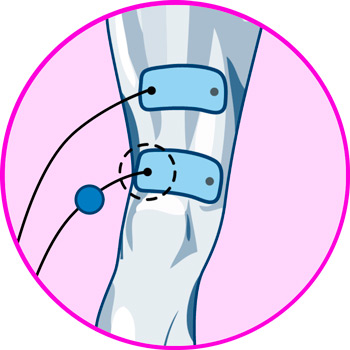
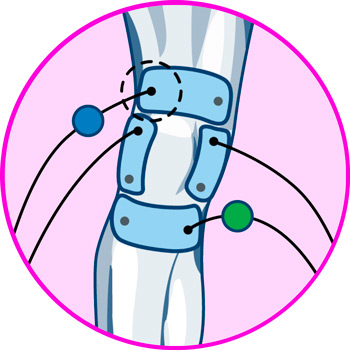

More types of EMS stimulators and TENS machines you should know about
What is a meniscus tear and what are the causes?
A meniscus tear is an injury that affects the cartilage in the knee that functions as a shock absorption system in the knee. This cartilage forms a cushion between the bones that serves to absorb shock and aid in lubricating the knee.
Its main causes can be listed as follows:
- Aggressive pivoting
- Sudden turns
- Excessive pressure
- Overload
- Trauma
- Cartilage degeneration
Meniscal tears are very common injuries in sports involving running and jumping, such as soccer or basketball, as well as in the elderly. Among the main risk factors that increase the likelihood of meniscal tears we can highlight:
- High-intensity physical activity: contact sports such as soccer or sports that involve a lot of pivoting of the knees, such as basketball, can cause meniscal tears.
- Aging: over time, knee cartilage naturally wears down, increasing the risk of injury.
- Obesity: the extra weight increases the pressure applied to the knees, eroding the cartilage and increasing its rate of wear.
What are the most common types of meniscus injury?
Meniscal tears or tears are very common injuries in people who play contact sports and in older people. They can occur in many ways and this variety dictates to some extent the procedure by which the injury should be treated.
The most common forms of meniscal tears are:
- Longitudinal tears: these are tears aligned with the circumferential fibers of the meniscus, parallel to its outer surface.
- Horizontal tear: very frequent form of rupture in older people, it consists of a tear that extends from the internal face of the meniscus to the intrameniscal substance.
- Radial tear: it is a vertical fracture that covers the entire junction between the posterior and middle thirds of the meniscus, sometimes extending to the periphery and completely severing the cartilage. It is caused by trauma and is very common in physically active patients.
- Oblique tear: it is a vertical tear that occurs between the posterior and medial portions of the cartilage.
- Pedicle tear: these are fragments of meniscus that can move to other positions within the joint, generating a particularly intense sensation of pain for the patient.
Differences between TENS and EMS: Which is better for treating meniscus injury?
Forms of electrotherapy are widely used within the field of physical therapy and fitness, especially Transcutaneous Electrical Nerve Stimulation (TENS) and Electro Muscle Stimulation (EMS) modalities. However, it is necessary to be able to distinguish the uses and effects of each of these forms of therapy in order to apply them optimally.
TENS (Transcutaneous Electrical Nerve Stimulation) is a form of physical therapy aimed at the treatment of symptoms caused by disorders and trauma such as those that can lead to meniscal tears, being identified with the following properties:
- It applies low intensity electric currents, variable between 1 and 250 Hz.
- Its effect is applied to the articular branches of the femoral nerve, as well as to the branches of the tibial and peroneal nerves, reducing the effect of the lesion on them.
- It works as a method to relieve the pain caused by the meniscus tear, however it is not a method to cure the injury.
- It works by numbing the nerve endings in the affected area, causing the release of endorphins and preventing electrical pain signals from reaching the brain from the affected area.
Unlike TENS, EMS (Electrical Muscle Stimulation) has effects more focused on increasing muscle strength, endurance and elasticity through contractions caused by electrical impulses.
We can recognize EMS therapy by the following characteristics:
- The minimum frequency of its electrical impulses is 70 Hz, and can reach a maximum of 150 Hz.
- Its effect is applied mainly on muscle tissue, creating contractions to increase fiber production.
- It can be applied to certain injuries in its lower frequencies, informing muscle management.
- It is designed as a method to condition and rehabilitate muscles, it is not intended to eliminate the sensation of pain.
Thus, we can conclude that both methods have merit in the treatment of meniscal tears, although the field of action of each therapy must be taken into account in order to apply it correctly and obtain the best results.
The functionality of TENS units is based on its ability to numb the articular sensory branches of the femoral, tibial and peroneal nerves, greatly minimizing the effect of pain caused by the joint and favoring the production of endorphins.
It should be emphasized that in an injury of this type, the effect of TENS therapy is limited to treating the pain caused by the cartilage tear, so the treatment of the injury itself should be carried out by a specialist.
For its part, the effectiveness of EMS therapy can be noted in more advanced stages of the meniscus tear healing process, thanks to the fact that its electrical impulses create a muscle massage that reduces inflammation, promotes optimal contraction of the muscles in the knee and reduces pain to a certain extent. It is necessary to emphasize the fact that it should only be applied in advanced stages of the rehabilitation process and at low frequencies, in order not to overstimulate the nerves and generate more pain in the patient.











